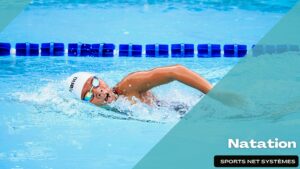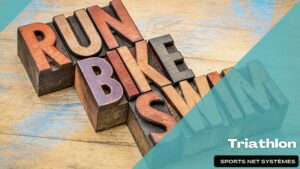A productive flutter kick is part of a good freestyle. It provides constant momentum, and counterbalance to the arm stroke. Because the legs require a disproportionate amount of energy, developing a relaxed, sustainable kick is important. The goal of the following freestyle kicking drills is to learn to use an economical flutter kick that will enhance the rest of the freestyle stroke.
 Toe Point Drill
Toe Point Drill
THE PURPOSE OF THIS DRILL
- Understanding the importance of a pointed toe kick
- Experimenting with foot pitch
- Develop a centralized kick
HOW TO DO THIS DRILL
- Step 1 : – Lay horizontally in the water, face down, arms extended. To breathe, do a simple press outward on the water with your hands, and raise your chin gently to the surface, then to return your face to the water, and bring your hands back together in an extended position.
- Step 2 : – Begin doing the flutter kick, using alternating up and down motion with your leg. Kick to a depth of about twelve to fifteen inches, and up to the surface of the water. Kick briskly with relaxed, but fairly straight legs.
- Step 3 : – Focus on your foot position. To best engage the water, you must use the largest surface of your feet to push against the water. Position your feet so your toes are pointed. Kick briskly for 30 seconds. Feel the tops and the bottoms of your feet push the water as your feet sweep up and down.
- Step 4 : – Now, flex your feet at the ankles, setting them at right angles to your leg (the standing foot position). Kick briskly for 30 seconds. Feel the smaller surface with which you are pushing the water. Notice that you don’t move forward well. Some people can even move backwards with this foot position!
- Step 5 : – Now, reposition your feet so your toes are pointed, and rotate your knees and feet inward, so that your toes are closer together than your heels. Together, your feet should form a point. Kick briskly for 30 seconds. Feel a larger foot surface pressing against the water. Notice that your kick is much more effective, with much less effort, and that there is one centralized splash at your feet.
- Step 6 : – Continue kicking with your toes pointed and your feet rotated inward. Kick briskly, with relaxed feet. Feel your kick move you forward as you sweep the water down with the tops of your feet, and up with the bottoms of your feet. Kick to the far end of the pool. Figure 4b Toes Not Pointed

DRILL FEEDBACK CHART
| Problem | Modification |
| My kick makes a huge splash, no matter what foot position I use. | Splash from your kick should be a result of your foot moving water, rather than your foot bringing air down into the water. Bend your knees less. Keep your feet connected to the water. |
| When I turn my feet inward, my big toes bump into each other. | You are fortunate to have excellent foot pitch! As you practice the drill more, adjust your knee rotation a bit to avoid your toes bumping, but do so as little as possible. |
| I get cramps in the arches of my feet when I point my toes. | Try pointing your foot and letting your toes be relaxed. As humans, this position is not natural for us. It can be improved as you practice more. |
 Floppy Foot Drill
Floppy Foot Drill
THE PURPOSE OF THIS DRILL
- Developing a relaxed kick
- Experiencing fish-like propulsion
- Learning to conserve energy
HOW TO DO THIS DRILL
- Step 1 : – Observe a fish swimming. Any fish will do: your pet gold fish, or a shark at the aquarium. Notice the tail as the fish swims. It is not rigid, rather it moves back and forth in the water like a flag in the breeze. It is fluid. The movement is not frantic, rather, it appears to be an effortless action for the fish.
- Step 2 : – Put on a single, long swim fin on one foot and stand in the water, and stand in the water with your back against the wall, submerging the entire fin under the water. Sweep your leg up and down in the water covering about twenty four inches of distance each way. Use enough speed so you feel the resistance of the fin against the water. Notice how the water bends the fin as it moves. Notice how when your leg sweeps in the one direction, the fin bends the opposite way. The movement is fluid, like the tail of the fish.
- Step 3 : – Now, take off the fin and float face down in the water, arms extended. Begin kicking briskly, keeping your feet connected to the water, moving within about fifteen inches of depth. Point your toes, but relax your feet so the water bends them like it did the fin. Kick briskly for 30 seconds. Think about the effortless and fluid motion of the fish tail. Let the water move your foot as if it was a flag in the wind. Rest, then practice again.
- Step 4 : – Once you develop a fluid, floppy foot kick, notice that the splash from your kick is much more compact, and your kick is more productive. Practice for several lengths of the pool.

DRILL FEEDBACK CHART
| Problem | Modification |
| My feet are stiff. | Try achieving the feeling on land to start. First try it with your hand. Relax your wrist and flop your hand back and forth. Now stand on one leg and relax your other ankle. Shake your other foot until it flops like your hand did. Next, sweep your leg forward, as if kicking a ball, foot relaxed. Watch your foot. By the farthest extent of the movement, your relaxed foot should flop forward. Now try it in the water. |
| I don’t feel resistance on my feet. | Kick more briskly. Try changing the depth of your kick. It should pass through about fifteen inches of water. Relax your ankles. |
| I get tired too quickly to notice a floppy kicking motion. | Give it time. Remember using the large muscles of your legs to initiate the kick will initially use more oxygen than a less effective kick, thus making you feel tired and out of breath. The muscles adapt relatively quickly as you practice. |
 Vertical Kicking Sequence
Vertical Kicking Sequence
THE PURPOSE OF THIS DRILL
- Understanding the importance of foot speed
- Engaging the correct muscles for flutter kick
- Feeling the water with your feet
HOW TO DO THIS DRILL
- Step 1 : – In water at least as deep as you are tall, get into a vertical position. Engage your core. Begin a gentle sculling action (tracing side to side underwater figure eights with your hands) to keep your head above water.
- Step 2 : – Without producing forward or backwards motion, begin kicking the flutter kick, moving your extended legs in a sweeping motion alternately so that when one foot is forward, the other is back, within a range of approximately twelve to fifteen inches. Your toes should be pointed towards the bottom of the pool, and your feet and knees should be rotated slightly inward.
- Step 3 : – Focus on the muscles you are engaging. They should be the large muscles, high in your legs. As you move your leg forward, you should be feeling your quadriceps. As you move your leg back, you should feel your hamstrings and glutes working.
- Step 4 : – Your legs should be fairly straight, yet not locked at the knee as you kick. As you increase the speed of your kick, forward and backward, avoid raising your knees as if marching or bicycling. It should feel like your legs are sweeping back and forth, like a broom through the water.
- Step 5 : – Kick even faster. Try to achieve a fluid motion that makes your legs feel as if they have no bones. Try to maintain your head up while kicking for 30 seconds.
- Step 6 : – Once you have achieved a fluid, comfortable kick, it is time to check its effectiveness by stopping the sculling action with your hands. Cross your hands over your chest positioning your left hand on the right shoulder, and your right hand on your left shoulder. Kick, keeping your head above water. Maintain for 30 seconds.
- Step 7 : – When you are able to keep your head up without the help of arm movements, try the advanced version of this drill: position your arms so they extend side to side at the surface of the water. Now raise your hands out of the water, bending at a right angle at the elbow. Kick! Can you keep your head up for 30 seconds?

DRILL FEEDBACK CHART
| Problem | Modification |
| I sink even when I am sculling. | Use straighter legs. Point your toes. Kick faster. |
| I bounce up and down. | Use a narrower, quicker kicking motion, rather than a scissor type kick. |
| I feel the kick in my calves. | Relax your feet more. Use less knee bend. Try to initiate the kick from higher on your leg, where the muscles are larger and stronger. |
 Single Leg Kicking
Single Leg Kicking
THE PURPOSE OF THIS DRILL
- Developing an effective, full leg kick
- Feeling a continuous kick
- Keeping the foot connected to the water
HOW TO DO THIS DRILL
- Step 1 : – Position a kick-board under your arms, hands at the far end, to support your upper body and keep your face out of the water. Hold the kick-board flat on the water.
- Step 2 : – Begin kicking the flutter kick with your right leg only. Allow your left leg to simply float. Kick briskly for 30 seconds. Rest.
- Step 3 : – Try again. Use your whole leg to kick, not just from the knee down. Notice that as you begin to perfect this skill, your kicking leg is moving very quickly, with no pause at the top or the bottom of the kick. Notice too, that you are pushing water in both directions: up and down.
- Step 4 : – Rest, then try it with the other leg for 30 seconds. Notice that if you allow your foot to come out of the water at the top of the kick, it is less effective than when it stays connected to the water.
- Step 5 : – Once you are able to create forward motion with one leg, try the advanced version of this drill. Bend your left leg at the knee, raise your heel, and hold it out of the water at a right angle. Kick very briskly with your right leg, with no pause at the top or the bottom of the motion. Use your whole leg to sweep the water. Kick for 30 seconds. Switch legs and kick for another 30 seconds.
- Step 6 : – After you rest, then kick regular flutter kicks with both legs, trying to simulate the same kicking you just finished with a single leg. Use your whole leg to kick to the same depth and same height. Use the same muscles and the same kick rate. Use the same continuous motion only this time alternate legs with each kick.
DRILL FEEDBACK CHART
| Problem | Modification |
| I seem to go uphill with the kickboard. | Press down on the kick-board with your arms and chest. Hold it parallel to the surface of the water. |
| I don’t move. | Try kicking with a bit more force, not necessarily a larger kick, just stronger. Don’t stop the kick at the top or the bottom. |
| I am making a lot of splash. | Use less knee bend. Move the water both up and down. Keep your feet connected to the water. |
{module pop}







